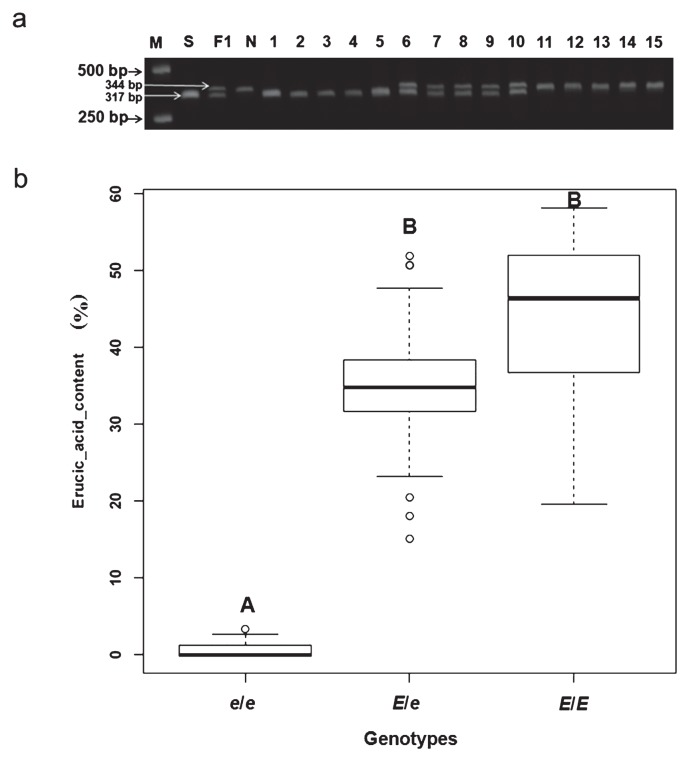Fig. 5.
The amplicons amplified by the primer pair pM120F and pM468R in the F2 population of Sanjiecaizi (e/e) × Nanhualinggongdacaizi (E/E). The amplicon contained one insertion in addition to the 28 deletions (as shown in Fig. 4). Therefore, the fragments amplified from the e/e genotype were 27 bases shorter than those from the E/E genotype, which was confirmed using sequencing. (a) M, DNA ladder; S, Sanjiecaizi (e/e), zero erucic line, 317 bp; F1 plants with a erucic acid content of 30.36 ± 5.02%, Sanjiecaizi × Nanhualinggongdacaizi, 344 bp and 317 bp; N, Nanhualinggongdacaizi (E/E), high erucic line, 344 bp; 1 to 5, F2 plants with a low erucic acid content (average 0.75% ± 1.32%); 6 to 10, F2 plants with a erucic acid content of 35.12 ± 7.94%; 11 to 15, F2 plants with a high erucic acid content (43.64% ± 10.60%). (b) Box plot showing the erucic acid content range and median for the three genotypes. e/e: homozygous genotype resembling the zero erucic acid parent Sanjiecaizi. E/e: heterozygous genotype containing both alleles of the two parents. E/E: homozygous genotype resembling HEA Nanhualinggongdacaizi. Note: Capital letters indicate significant differences at the 0.01 level.

